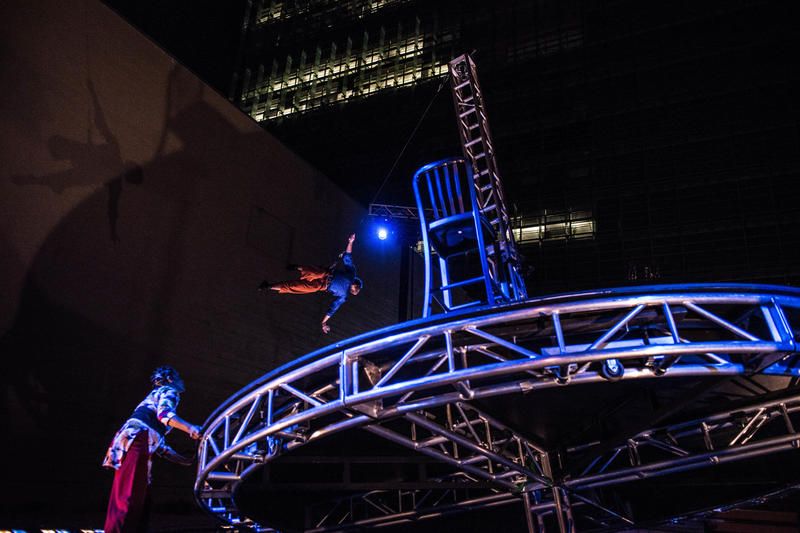How to See the Liberty Bell...in Queens
A copy of the famous American bell can be found inside a bank, which itself is modeled after Independence Hall!


The original cell block of the famous Sing Sing Correctional Facility, built in 1828, will play a new role in the justice system. The imposing, historic structure which once housed 1,200 incarcerated men is set to transform into the Sing Sing Prison Museum. The museum complex will also incorporate the 1936 Powerhouse, which sits outside the prison walls. Over the weekend, in the shadow of the prison, an aerial dance performance in honor of women with incarcerated loved ones helped spread the word about the museum and the need for prison reform.
The Wait Room is a high-flying performance set to a sound score created by Pamela Z. The music features a women’s chorus and snippets from interviews with women who have loved ones in prison. The show is set on a rotating and tilting stage that resembles a clock face. Looming metal chairs like those found in prison wait rooms serve as set pieces. The choreography by Jo Kreiter of Flyaway Productions takes the dancers from the ground to the air, with movements that illustrate the frustration, restlessness, shame and ultimate hope of women affected by the challenges of incarceration.

Flyaway – The Wait Room – Laura Elaine Ellis, Clarissa Dyas – Photographer Austin Forbord
The East Coast performances of The Wait Room, which originally debuted in California, embody the type of programming that the Sing Sing Prison Museum will eventually host. The goal of the museum is not just to become the leading prison museum in the country and tell the history of the site, but also to “become a prominent voice in the national conversation about social and criminal justice and to have a positive impact on currently and formerly incarcerated individuals and their families, prison employees, and victims and their families.”
Sing Sing Prison opened in 1828 after three years of construction. In 1825, incarcerated men from Auburn Prison were brought to the 130-acre site in New York’s Hudson Valley to build a new prison out of limestone, “Sing Sing marble,” from a nearby quarry. The cellblock they built, with 800 cells just seven feet deep and three feet wide, would house the Sing Sing population for almost a century. The prison is known for its infamous inmates and executions by electric chair.

Powerhouse Rendering, Courtesy of the Sing Sing Prison Museum
Today, that original cellblock sits in ruin, but not for long. The first phase of the Sing Sing Prison Museum is scheduled to be complete in 2020. This first step includes preserving and stabilizing the 1936 Powerhouse. This building formerly supplied all of the electricity to the prison but is now used mainly for storage. Inside, the Powerhouse will be a place to prototype exhibitions, programs and media. The powerhouse and the cellblock, which sits inside the walls of the still active prison, will eventually be physically connected by a 300-foot secure corridor. The complete museum is projected to be finished by 2025, the 200th anniversary of the original cellblock.
Next, check out 13 of NYC’s Active Prisons: Rikers Island, The Tombs, Manhattan Correctional Center and 16 of NYC’s Former Prisons: Jefferson Market, Bellevue, Essex Market, City Hall
Subscribe to our newsletter